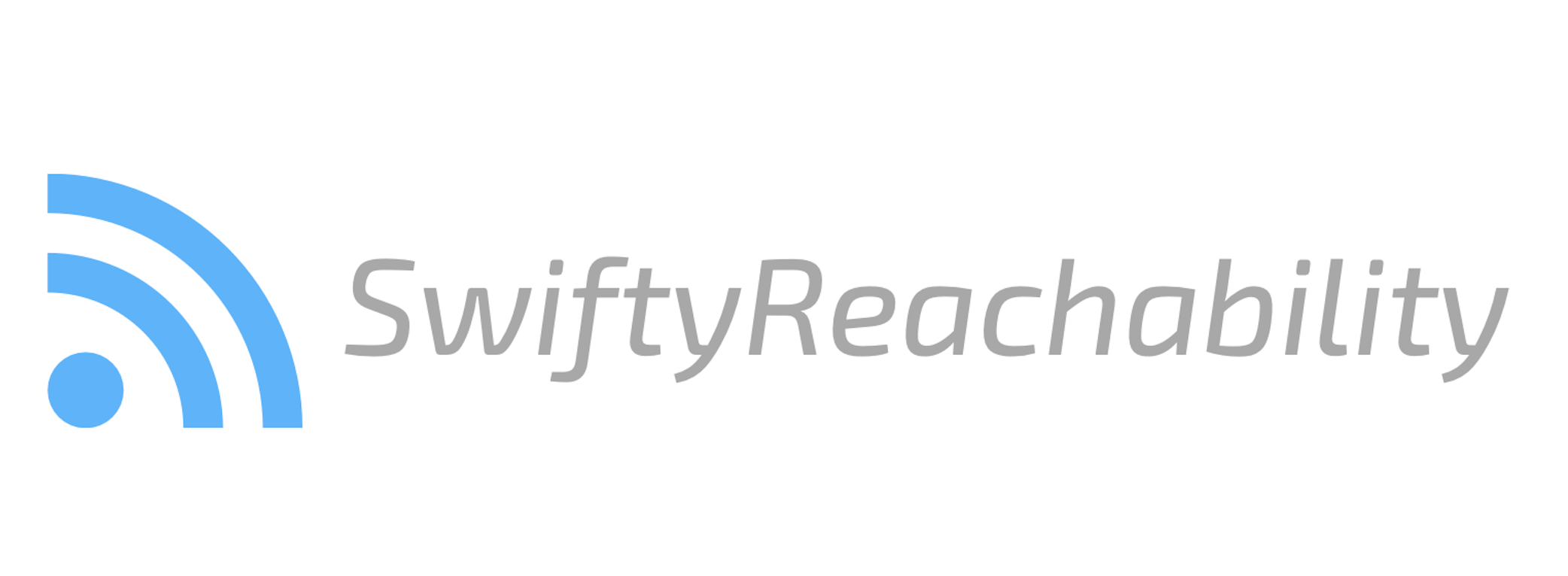SwiftyReachability is a simple and lightweight network interface manager written in Swift.
Freely inspired by https://github.com/tonymillion/Reachability, with the aim of providing an updated interface that includes all the innovations introduced in the iOS world since its latest update and add new features.
- Easy to use: no configuration needed, SwiftyReachability is ready to go.
- Shared: it’s based on a single istance shared by the whole app, you can access to the network layer’s information at any time and any point.
- Detailed: it allows you to know the connection type used and in the case of ‘Cellular Network’ you also know which radio technology is being used.
- SwiftUI compatible: provides an elegant SwiftUI support that is very easy to use.
- Multiple Observers: you can define several network Observers at the same time to get information and update your UI.
Installation
You can use Swift Package Manager to add SwiftyReachability to your project.
Add Package Dependency
In Xcode, select File > Add Packages…
Specify the Repository
Copy and paste the following into the search/input box.
https://github.com/antonio-war/SwiftyReachability
Specify options
Use Up to Next Major Version as dependency rule and enter the current SwiftyReachability version. Then click Add Package.
Overview
Connection Status
SwiftyReachability’s main purpose is to track device connectivity. Through SwiftyConnectionStatus it is possible to find out if it is online or offline.
enum SwiftyConnectionStatus {
case online
case offline
}
Connection Type
When the device is online it may be useful to know information about the connection type. You can do it through SwiftyConnectionType.
enum SwiftyConnectionType {
case cellular(radioType: SwiftyRadioType)
case wifi
case ethernet
}
Radio Type
Unlike original Reachability framework we introduced other information, when the device is connected to a cellular network you can know if it is using a 3G, LT or some other radio type, through SwiftyRadioType.
enum SwiftyRadioType {
case undefined
case _2G
case _3G
case _4G
case _5G
}
On some devices, however, this feature is not available, at least for now.
Simple Usage
In case you need to access current information, without the need to be informed about future changes, it’s possibile to do so by directly accessing to the shared instance of SwiftyReachability.
let connectionManager = SwiftyReachability.shared
let status = connectionManager.connectionStatus
let type = connectionManager.connectionType
Observer Usage
When the status of your app needs to be updated based on the connection status you may need an observer. Obviously SwiftyReachability provides all the elements for this type of implementation.
Swift / UIKit
For simple objects or view created with UIKit we provide a protocol oriented solution. The object must conform to the SwiftyReachabilityObserver protocol and implement the required methods. He also has to decide when to start and stop the observation.
class UIKitViewController: UIViewController, SwiftyReachabilityObserver {
@IBOutlet weak var statusLabel: UILabel!
@IBOutlet weak var connectionTypeImage: UIImageView!
@IBOutlet weak var radioTypeLabel: UILabel!
override func viewDidLoad() {
super.viewDidLoad()
}
override func viewWillAppear(_ animated: Bool) {
super.viewWillAppear(animated)
startObserving()
}
override func viewWillDisappear(_ animated: Bool) {
super.viewWillDisappear(animated)
stopObserving()
}
func didChangeConnectionStatus(_ status: SwiftyConnectionStatus) {
DispatchQueue.main.async {
switch status {
case .online:
self.statusLabel.text = "Online"
self.statusLabel.backgroundColor = .systemGreen
case .offline:
self.statusLabel.text = "Offline"
self.statusLabel.backgroundColor = .systemRed
}
}
}
func didChangeConnectionType(_ type: SwiftyConnectionType?) {
DispatchQueue.main.async {
guard let connectionType = type else {
self.connectionTypeImage.isHidden = true
self.radioTypeLabel.isHidden = true
return
}
switch connectionType {
case .cellular(let radioType):
self.connectionTypeImage.image = UIImage(systemName: "antenna.radiowaves.left.and.right")
self.connectionTypeImage.isHidden = false
self.radioTypeLabel.text = radioType.description
self.radioTypeLabel.isHidden = false
case .wifi:
self.connectionTypeImage.image = UIImage(systemName: "wifi")
self.connectionTypeImage.isHidden = false
self.radioTypeLabel.isHidden = true
case .ethernet:
self.connectionTypeImage.image = UIImage(systemName: "cable.connector")
self.connectionTypeImage.isHidden = false
self.radioTypeLabel.isHidden = true
}
}
}
}
SwiftUI
In this case we have instead created an ad hoc solution with an ObservableObject. It is really easy to use SwiftyReachabilityObserverUI
struct SwiftUIView: View {
@ObservedObject
var connectionObserver : SwiftyReachabilityObserverUI = SwiftyReachabilityObserverUI()
var body: some View {
VStack {
if connectionObserver.connectionStatus == .online {
Text("Online")
} else {
Text("Offline")
}
if let connectionTypeDescription = connectionObserver.connectionType?.description {
Text(connectionTypeDescription)
}
}
}
}
Advice
Like any other package related to Reachability, in the case simulator execution, there may be delays in the functioning of the network observers. We therefore recommend testing your code on devices, where these problems do not occur.
License
SwiftyCache is published under the Apache 2.0 license.






